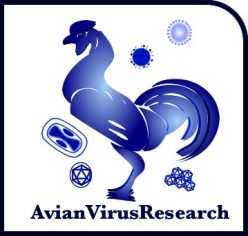[for up-to-date info see our “Global H5N8 News” page]
The highly pathogenic avian influenza (HPAI) outbreaks currently being reported in Europe are being caused by an H5N8 strain. Countries affected so far include: Austria, Croatia, Denmark, Germany, Hungary, Netherlands, Poland and Switzerland. Die-offs of wild birds (including ducks, geese, swans and gulls) have been reported, as well as outbreaks in poultry farms.
“Stamping-out” measures that involve culling of huge numbers of poultry are being applied in an attempt to prevent the spread of H5N8. The strength of biosecurity measures at poultry farms is a recognised factor in the risk of HPAI outbreaks, particularly whether poultry are exposed to infected wild birds. Recommendations are being made to poultry keepers on how best to reduce the risk of H5N8 incursion (see DEFRA’s UK Risk Assessment, WHO & ECDC risk assessments, ThePoultrySite and our News page).
This outbreak is reminiscent of the situation in 2014-15, which saw H5N8 outbreaks originating in Asia sweep into Europe, the Middle East and North America, most likely through bird migratory pathways. Both poultry and wild bird deaths were recorded. HPAI H5 has continued to evolve in enzootic countries (such as China, Bangladesh, India, Egypt, Indonesia and Vietnam) since its first emergence in Hong Kong in 1996 and subsequent re-emergence in 2003. This persistence of the H5 viruses has generated huge genetic diversity within several H5 phylogenetic clades and, in 2014, H5N8 emerged in South Korea before it spread globally and was eventually reintroduced into South Korea and Japan. More recently, H5N8 was found in wild birds in Russia, signifying its continuing circulation and most likely accounting for the recent spread into Europe.
What is distinctive about H5N8 and other modern HPAI H5 strains is their ability to infect wild birds, including migratory birds, which is thought to aid their global spread. In particular, this outbreak appears to show greater mortality in wild birds which may indicate changes in its pathogenicity.
So far, the risk to humans is deemed low, as these avian viruses lack any of the hallmarks of human adaptation; indeed no human infections of H5N8 have yet been reported. That being said, other avian H5 virus strains have caused infection in humans and gained human adaptive mutations, which can worsen the outcome of disease. Thankfully, none have yet acquired the full arsenal of mutations required to transmit between humans and spark a new pandemic. Continual surveillance and reporting is, however, crucial in order to monitor the pandemic risk of newly emerging avian influenza virus strains.
Contributed by: Jason Long (Imperial College London)
Copyright © 2016 Jason Long
First posted: 18-Nov-2016
References
Kaplan et al. mSphere (2016) Novel Highly Pathogenic Avian A(H5N2) and A(H5N8) Influenza Viruses of Clade 2.3.4.4 from North America Have Limited Capacity for Replication and Transmission in Mammals. http://msphere.asm.org/content/1/2/e00003-16
Lee et al. J Virol (2016) Intercontinental Spread of Asian-origin H5N8 to North America through Beringia by Migratory Birds. http://jvi.asm.org/content/early/2015/04/02/JVI.00728-15
Lee et al. Emerg Infect Dis (2014) Novel reassortant influenza A(H5N8) viruses, South Korea, 2014]. https://wwwnc.cdc.gov/eid/article/20/6/14-0233_article
Kwon et al. Emerg Infect Dis (2016) Highly pathogenic avian influenza A(H5N8) viruses reintroduced into South Korea by migratory waterfowl, 2014–2015. https://wwwnc.cdc.gov/eid/article/22/3/15-1006_article
FAO Empres Watch (Sept 2016) H5N8 highly pathogenic avian in uenza (HPAI) of clade 2.3.4.4 detected through surveillance of wild migratory birds in the Tyva Republic, the Russian Federation – potential for international spread. http://www.fao.org/3/a-i6113e.pdf
WHO Assessment of risk associated with influenza A(H5N8) virus
ECDC Risk Assessment (18 Nov 2016)
